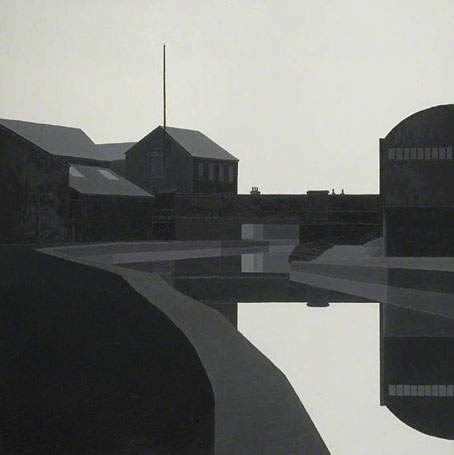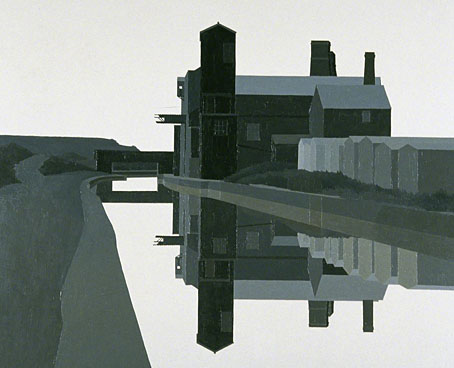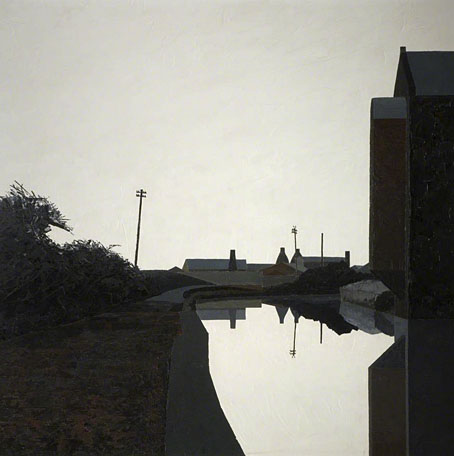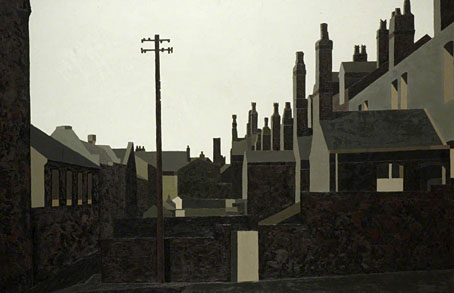Canal at Longport (1970s).
Maurice Wade‘s paintings of factories and back streets in Staffordshire are perfect examples of what the I Ching would call “accumulation through restraint”, using a flat rendering and a limited palette to achieve effects that a more detailed examination would fail to capture. Many of Algernon Cecil Newton‘s paintings possess the same stillness, and also depict the parts of urban Britain that are usually shunned as artistic subjects—in the case of canals, the literal backwaters—but Wade’s paintings are even more depopulated, silent and still. Henry Birks discusses Wade’s life and work here, noting that the artist painted over 300 landscapes. He’s evidently overdue for greater recognition.
Canal at Middleport (1976).
Canal at Longport III (1970s).
Kitchen Chimneys (1964).
Previously on { feuilleton }
• Valette’s steam and smoke





Stoke-on-Trent, North Staffordshire – not Shropshire. https://potbanks.wordpress.com/2019/04/18/the-middleport-and-longport-work-of-maurice-wade/
Thanks, yeah, I don’t know why I wrote that when I know where the Potteries are. One of the hazards of doing these things late at night.
I hate to be the one to remind you, but J.G. Ballard passed away ten years ago today. It is hard to believe that he has been gone for a decade, especially as the planet is increasingly beginning to resemble one of his turbulent landscapes, with things like climate change and Brexit seeing to that. Ballard, along with the likes of Kafka, Burroughs, Philip K. Dick, et cetera, managed to create realist novels more convincing than the usual literati tripe.
Nice artwork, by the way; canals are always a fascinating subject.
I had not heard of this artist until now. Strange feelings viewing his work.”Canal at Middleport” is striking on so may levels, a complete antithesis of the idyllic “Mill by the Stream” rural paintings of a long-gone era. This is Soviet in its industrial setting, life-less, not a ripple in the canal, not a cloud in the dead sky, we are the unwilling (?) inheritors of the industrial revolution. There is beauty here in its angular, symmetric almost unknowing and deliberate cubist presentation. The cathedral to industry Most interesting, thank you for letting us see this.
These are wonderful!